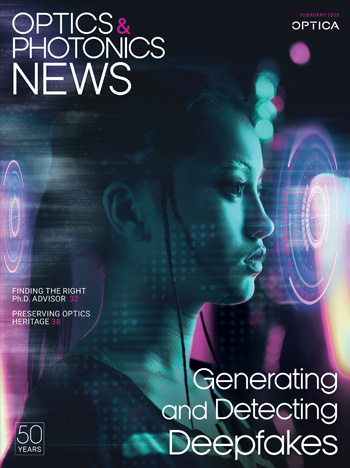
May 1994 Issue
Feature Articles
Impact Of Nonlinearities On Lightwave Systems
The field of nonlinear optics in silica fibers is over 20 years old. However, until recently, nonlinear effects in single-mode silica fibers were laboratory curiosities requiring powerful lasers for their observation. Recent advances in optical amplifiers for the 1.5 µm Wavelength region have drastically altered the lightwave communications landscape and elevated optical nonlinearities to a primary systems consideration.
by A.R. ChraplyvyHubble As A Phenomenon: Lessons For All
The final chapter on the saga of the hapless Hubble appears to have come to an end. Last December's recovery mission has been successful beyond all expectations. The release of the pictures from the new WFPC (Wide Field/Planetary Camera) and the FOC (Faint Object Camera), which was repaired by the installation of the COSTAR off-axis aspheric optics, showed that all of the fixes worked well and restored the telescope to "full" operation in less than a month.
by R. R. ShannonPaper Optics
Optical phenomena occur around us so frequently that it might be possible to see optics playing a role in any subject we can think of. Modern technology uses lots of optics. Optics are found at the movies, in our CD players, cameras, and telephones. But what if we picked a bland subject like ... paper, for instance! How much do optics and paper really have in common? Here is my analysis, demonstrated by way of some fun experiments to expose kids to the world of paper optics!
by Josh CobbControlling Chaotic Lasers
Do lasers really exhibit chaos? Irregular intensity fluctuations were observed even in the earliest days of lasers. For example, the "spiking" fluctuations present in the output of a ruby laser were difficult to miss. All fluctuation phenomena observed were then commonly labeled "noise." Since that time, however, it has become evident that apparently random fluctuations can also occur in totally deterministic systems—those that are modeled by systems of equations containing no sources of noise. Such behavior is commonly called chaos
by Rajarshi Roy, Zelda Gills, and K. Scott ThornburgA Difficult Period Of Transition For U.S. Optics Standards
For the past 40 years, the U.S. Department of Defense (DoD) has been the leader and prime driver for American optics standards activities. The fact that DoD is now withdrawing from that leadership role, combined with the increased importance of international trade and international standards, places U.S. optics standards activities in grave jeopardy.
by Pat Trotta
![Illustration of a synapse in the brain. [Getty Images]](https://opnmedia.blob.core.windows.net/$web/opn/media/images/articles/2025/0425/departments/202504-cover-web.jpg?ext=.jpg)
![Fiber draped around a hand, demonstrating its flexibility. [Photo by Z. Wang and L. Wei]](https://opnmedia.blob.core.windows.net/$web/opn/media/images/articles/2025/0325/departments/202503-cover-web.jpg?ext=.jpg)
